





| House Centipede (Scutigera coleoptrata (Linnaeus, 1758)) |






|
|
Scientific name: Scutigera coleoptrata (Linnaeus, 1758) Common name: House Centipede French name: Scutigère véloce Phylum: Arthropoda Subphylum: Myriapoda Class: Chilopoda Subclass: Notostigmophora Order: Scutigeromorpha Family: Scutigeridae Size: Body size: 25 to 35 mm; Total length including legs and antennae: 75 to 100 mm. Habitat: Inside houses, in basements and bathrooms in particular, but also a outside in damp places. Food: The House Centipede is a predator feeding on small arthropods, insects and spiders. Preys are paralyzed by venom injected by the forcipules located on the first segment of the body. Though House Centipede's visual acuity is very developed, preys are often detected during the night using the sensitive antennae. Reproduction: During mating male and female turn one around the other. The male deposit its sperm on the ground and it is then picked by the female. Females lay an average number of sixty eggs. Young House Centipedes hatch out with 4 pairs of legs. They gain one more pair of legs at the first moult, then 2 additional pairs at each following moults to reach 15 pairs of legs. There are 3 additional moults without any change to the number of pairs of legs. Geographic area: Originated form the Mediterranean area, the House Centipede is now found worldwide but mainly in hot and warm regions. |
Adult House Centipedes show 15 pairs of legs. The hind legs are clearly much longer than the other legs and resemble antennae. It is then difficult to recognize the front and the back of the body. The body is yellowish grey to beige with three dark, black, grey or blue longitudinal stripes on the upper side. The legs are rather long and ringed. They allow the House Centipede to move very fast, up to a speed of 40 cm per second. The long rear legs also allow the House Centipede to jump forwards. The compound eyes are each made of up to 600 facets. The House Centipede is lucifugous, meaning that it prefers to avoid light. |
| [To know more about the House Centipede] [Next picture] [Top] |
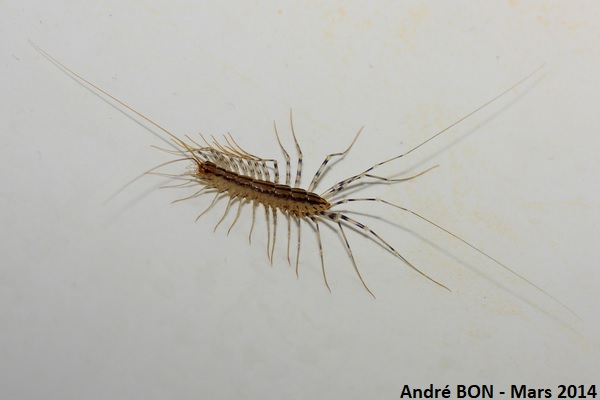
|
I have found this House Centipede in the bath. Not knowing whether it was trapped or able to walk away, I permitted myself to put it back on the floor, after a short photo session of course. |
| [To know more about the House Centipede] [Next picture] [Previous picture] [Top] |
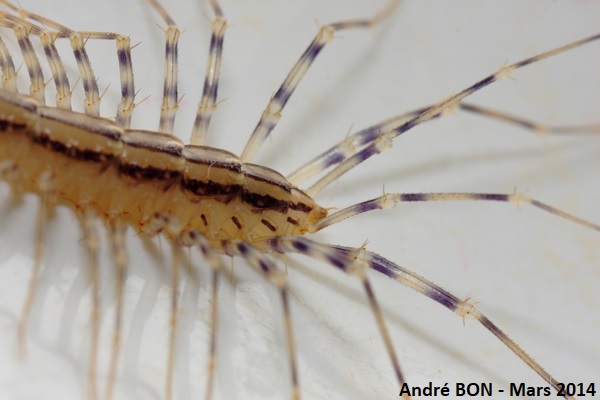
|
I have tried to shoot a close up view of the head but I chose the wrong side. This symmetrical shape of the House Centipede is also used as defence feature. Its predators are surprised to see it run away in the opposite direction that the one they anticipated. |
| [To know more about the House Centipede] [Next picture] [Previous picture] [Top] |
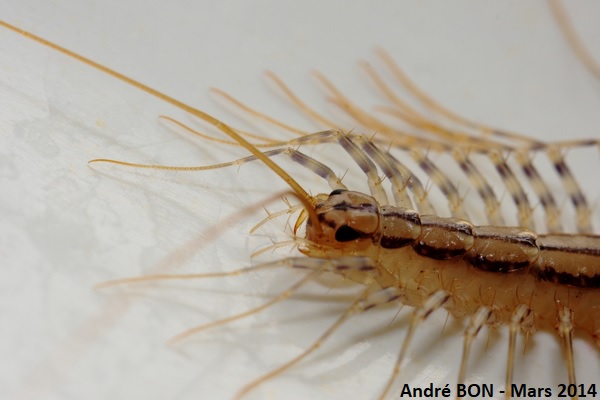
|
Here is one view of the head on which you can see the forcipules used to inject venom to preys. House Centipedes are harmless for humans (they are even very useful to control insects and spiders). However they may bite when manipulated. The pain is similar to a wasp sting. |
| [To know more about the House Centipede] [Next picture] [Previous picture] [Top] |
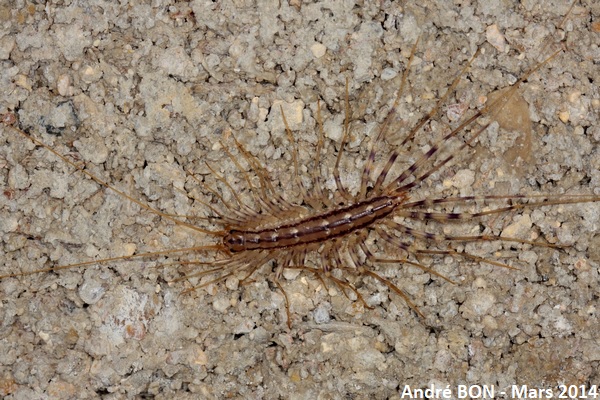
|
This House Centipede, observed in the cellar where I am used to storing vegetables, was certainly and unintentionally transported by me from Burgundy. |
| [To know more about the House Centipede] [Next picture] [Previous picture] [Top] |
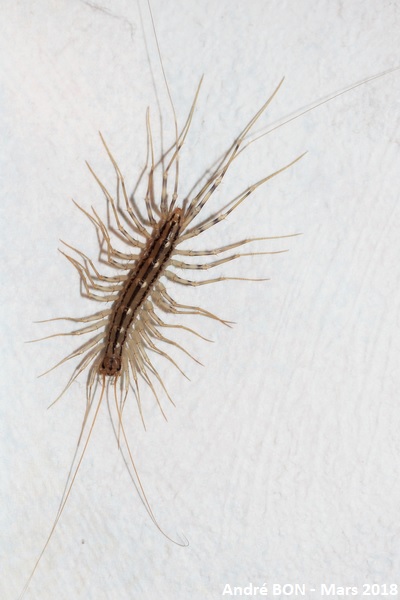
|
It's difficult not to cut the long legs and antennae when you want to take a photo not too far away. |
| [To know more about the House Centipede] [Previous picture] [Top] |

|
My close-up photos of small subjects are shot with manual focus and I wasn't precise enough to get the eye in focus this time. I will replace this photo when I have a slightly better one. |